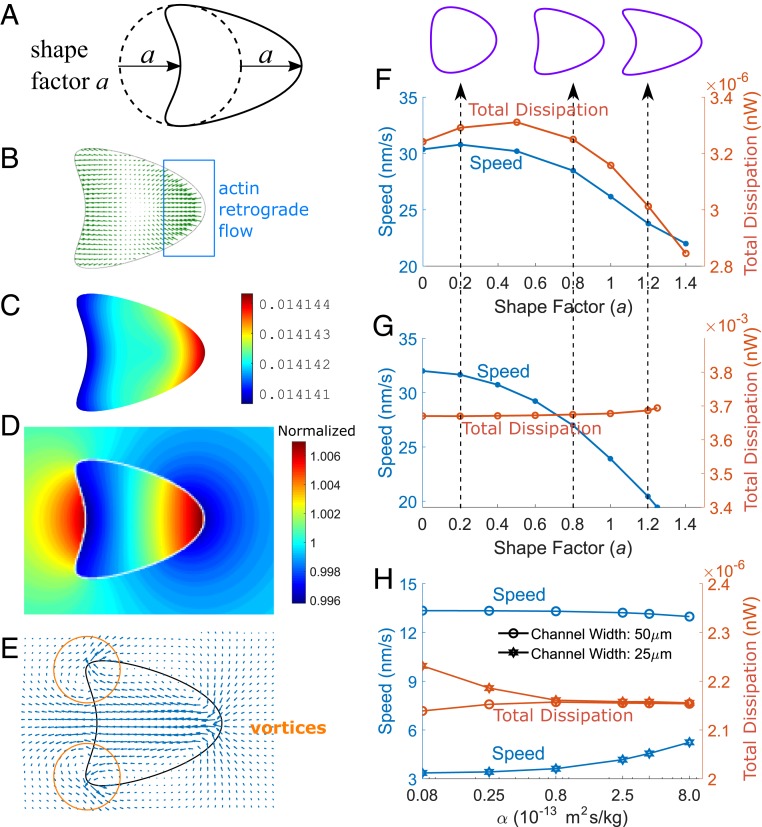Fig. 4.
Cell-migration speed depends on the cell shape and membrane permeability. (A) Cell shapes in the 2D model parameterized by the shape factor , defined as the deviation away from a circular shape. (B–E) Sample field variables from the 2D simulation where . (B and C) Actin-network velocity (C) and concentration (B) in the actin-driven mechanism. (D and E) Intracellular and extracellular solution concentration (D) and fluid velocity (E) in the water-driven mechanism. (F and G) Cell speed and mechanical-energy dissipation () for different cell shapes in actin-driven (F) and water-driven (G) cell migration. Shapes are defined as the initial configuration of the cell. (H) Under actin-driven without polarized active solute pumping, cell speed increases with increasing membrane permeability under high hydraulic resistance.

